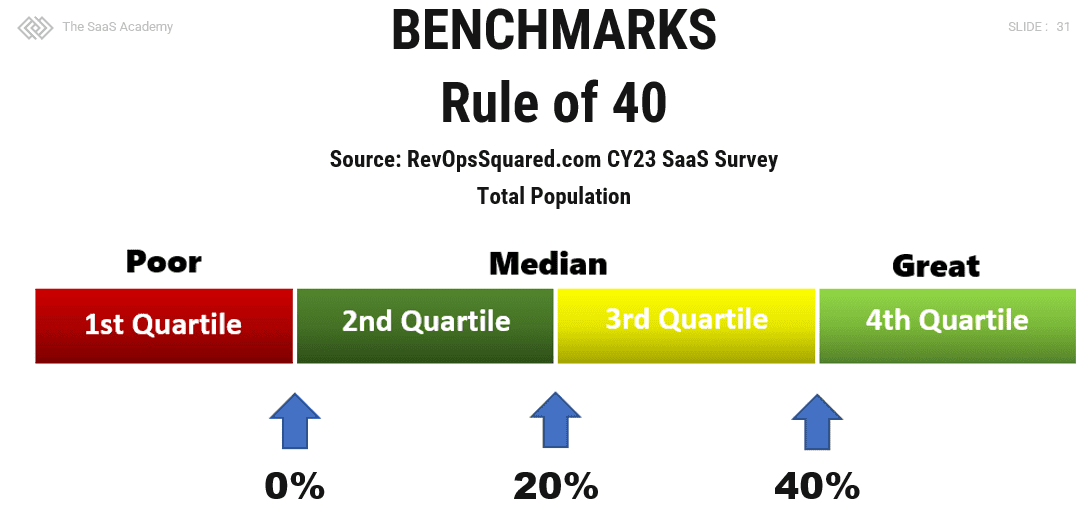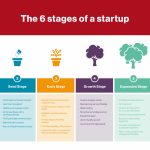What Types of Insurance Should a Saas Startup Have at Various Revenue Levels?
For SaaS startups, navigating the complexities of risk management is critical as they scale, and having the right insurance coverage is a cornerstone of that strategy. At each stage of growth—from early revenue to rapid scaling—different risks emerge, demanding tailored protections. Early-stage companies might prioritize general liability and cyber insurance to safeguard against operational disruptions and data breaches. As revenue grows, product liability, errors and omissions (E&O), and directors and officers (D&O) insurance become essential to address evolving legal and financial exposures. For mature startups, comprehensive policies like intellectual property or business interruption insurance can mitigate high-stakes threats. Understanding these needs at various revenue levels ensures resilience in an unpredictable market.
-
Essential Insurance Coverage for SaaS Startups at Different Revenue Stages
- 1. Early-Stage (Under 0k Revenue): Foundational Insurance Policies
- 2. Growth Stage (0k - M Revenue): Expanding Coverage for Scaling Operations
- 3. Maturity Stage (M+ Revenue): Comprehensive Protection for Established SaaS Companies
- 4. Cyber Liability Insurance: Critical at Every Revenue Level
- 5. Directors and Officers (D&O) Insurance: When to Consider Coverage
- What is the 3 3 2 2 2 rule of SaaS?
- What insurance does a tech startup need?
- What are the revenue multiples for SaaS startups?
- How much does SaaS business insurance cost?
-
Frequently Asked Questions (FAQs)
- What Insurance Should a SaaS Startup Consider at the Pre-Revenue or Early-Stage Phase?
-
How Does Insurance Needs Change When a SaaS Startup Reaches
- What Additional Coverage Is Critical for a SaaS Startup Scaling Beyond M–M in Revenue?
- Why Should High-Growth SaaS Startups (Over M Revenue) Prioritize Specialized Insurance Policies?
Essential Insurance Coverage for SaaS Startups at Different Revenue Stages
SaaS startups face unique risks as they scale, and insurance needs evolve alongside revenue growth. At early stages, foundational policies protect against immediate liabilities, while expanding coverage becomes critical as customer bases grow, data volumes increase, and regulatory scrutiny intensifies. Below, we break down insurance recommendations based on revenue milestones and operational complexity.
See Also What Kinds of Returns Are Limited Partners Seeking From a Vc Fund Are There Term Sheets Agreements Between Lps and Vc General Partners on What Terms
What Kinds of Returns Are Limited Partners Seeking From a Vc Fund Are There Term Sheets Agreements Between Lps and Vc General Partners on What Terms1. Early-Stage (Under $500k Revenue): Foundational Insurance Policies
At this stage, prioritize cost-effective policies that address basic liabilities. General Liability Insurance covers bodily injury or property damage claims, while Professional Liability Insurance (Errors & Omissions) protects against client disputes over software failures or service gaps. Cyber Liability Insurance is also essential, even for small startups, to mitigate costs from data breaches or ransomware attacks.
| Insurance Type | Coverage Focus | Key Considerations |
| General Liability | Physical or property damage claims | Often required for office leases or client contracts |
| Professional Liability | Service errors or omissions | Critical for client-facing SaaS platforms |
| Cyber Liability | Data breaches, ransomware | Minimum coverage: $1M |
2. Growth Stage ($500k - $2M Revenue): Expanding Coverage for Scaling Operations
With increased revenue and customers, consider Directors and Officers (D&O) Insurance to protect leadership from lawsuits and Employment Practices Liability Insurance (EPLI) as hiring accelerates. Upgrade Cyber Liability to include crisis management and regulatory fines. Product Liability Insurance may also become relevant if your software interfaces with physical devices.
See AlsoHow to Dissolve an LLC in Utah| Insurance Type | Coverage Focus | Key Considerations |
| D&O Insurance | Leadership legal protection | Vital before seeking venture capital |
| EPLI | Employee disputes | Covers discrimination or wrongful termination claims |
| Enhanced Cyber Liability | Regulatory compliance, PR costs | Ensure GDPR/CCPA coverage |
3. Maturity Stage ($2M+ Revenue): Comprehensive Protection for Established SaaS Companies
At this level, add Umbrella Insurance for excess liability coverage and Fiduciary Liability Insurance if offering employee benefits. Business Interruption Insurance safeguards against revenue loss during outages, while Intellectual Property Insurance defends against infringement lawsuits. Consider Crime Insurance to address internal fraud risks.
| Insurance Type | Coverage Focus | Key Considerations |
| Umbrella Insurance | Excess liability limits | Align with total assets |
| Business Interruption | Downtime revenue loss | Include cloud outage scenarios |
| IP Insurance | Patent/copyright disputes | Critical for tech-heavy SaaS firms |
4. Cyber Liability Insurance: Critical at Every Revenue Level
Cyber threats persist regardless of revenue. Early-stage startups should prioritize First-Party Coverage (breach response costs), while mature companies need Third-Party Coverage (client lawsuits) and Regulatory Penalty Protection. Annual premiums typically range from $1k (early-stage) to $50k+ (enterprise-level).
See Also What Are the Top Vc Firms and Angel Groups in Seattle Portland Vancouver or Pac Nw Area
What Are the Top Vc Firms and Angel Groups in Seattle Portland Vancouver or Pac Nw Area| Coverage Tier | Early-Stage | Growth/Maturity |
| Breach Response | Forensics, notifications | Included |
| Legal Defense | Limited | Multi-million dollar limits |
| Regulatory Fines | Optional | Mandatory for global compliance |
5. Directors and Officers (D&O) Insurance: When to Consider Coverage
D&O becomes critical when onboarding investors or appointing a formal board. Side A Coverage protects personal assets of executives, while Side B/C covers the company. Startups with $1M+ revenue should secure at least $2M in coverage. Premiums average 1-2% of coverage limits.
| Coverage Type | Protection Scope | Typical Limits |
| Side A | Individual executives | $1M-$5M |
| Side B/C | Company reimbursement | Scaled with revenue |
What is the 3 3 2 2 2 rule of SaaS?

 How Do I Pitch an Idea to a Seed Fund or a Vc?
How Do I Pitch an Idea to a Seed Fund or a Vc?Understanding the Core Concept of the 3 3 2 2 2 Rule
The 3 3 2 2 2 rule is a strategic framework for SaaS (Software as a Service) businesses to prioritize growth and operational efficiency. It emphasizes allocating resources to critical areas that drive sustainable scaling. The numbers represent:
- 3 core product features: Focus on refining and perfecting three essential functionalities that solve primary customer pain points.
- 3 key metrics: Track metrics like Monthly Recurring Revenue (MRR), Customer Acquisition Cost (CAC), and Churn Rate to gauge business health.
- 2 customer segments: Target two distinct buyer personas to ensure focused marketing and product development.
- 2 marketing channels: Double down on the two most effective acquisition channels (e.g., SEO and paid ads).
- 2 retention strategies: Implement tactics like onboarding emails and loyalty programs to reduce churn.
Why the 3 3 2 2 2 Rule Enhances SaaS Scalability
By adhering to the 3 3 2 2 2 framework, SaaS companies avoid spreading resources too thin. This structured approach ensures:
See Also What Are Vc Associate Interview Case Studies Like?
What Are Vc Associate Interview Case Studies Like?- Prioritization of high-impact features, reducing development clutter and improving user satisfaction.
- Data-driven decision-making through consistent metric tracking, enabling quick adjustments to strategies.
- Efficient resource allocation, as teams focus on fewer segments and channels, maximizing ROI.
Implementing the 3 3 2 2 2 Rule in Product Development
Applying the rule to SaaS product development involves:
- Identifying three must-have features through customer feedback and competitive analysis.
- Iterating rapidly based on usage data to refine these features before expanding the product scope.
- Aligning updates with retention goals, ensuring new functionalities address existing user needs.
Key Metrics to Track Under the 3 3 2 2 2 Framework
The three critical metrics in this rule provide actionable insights:
- MRR (Monthly Recurring Revenue): Measures predictable income and growth trends.
- CAC (Customer Acquisition Cost): Helps optimize marketing spend and channel efficiency.
- Churn Rate: Highlights retention issues and informs improvements to customer experience.
Optimizing Marketing and Retention with the 3 3 2 2 2 Strategy
To maximize the rule’s impact on marketing and retention:
- Focus on two high-conversion channels, such as content marketing and referral programs.
- Tailor messaging for two customer segments to increase relevance and engagement.
- Deploy retention tactics like personalized onboarding and proactive customer support.
What insurance does a tech startup need?

General Liability Insurance
General liability insurance is essential for tech startups to protect against third-party claims of bodily injury, property damage, or advertising injuries. This coverage helps cover legal fees, settlements, and medical costs. Key scenarios include:
- Client injuries at your office or during meetings.
- Damage to a third party’s property caused by your operations.
- Claims of defamation or copyright infringement in marketing materials.
Professional Liability (Errors & Omissions) Insurance
Professional liability insurance safeguards startups against claims of negligence, mistakes, or failure to deliver services as promised. This is critical for tech companies offering software, consulting, or SaaS products. Coverage includes:
- Legal costs for breach of contract allegations.
- Claims arising from software bugs or system failures.
- Disputes over intellectual property infringement.
Cyber Liability Insurance
Given the reliance on digital systems, cyber liability insurance is vital to address data breaches, ransomware attacks, or unauthorized access. It typically covers:
- Costs of data breach notifications and credit monitoring.
- Legal expenses from lawsuits over compromised customer data.
- Recovery of ransom payments or system restoration.
Directors and Officers (D&O) Insurance
D&O insurance protects a startup’s leadership team from personal liability related to managerial decisions. This is crucial during fundraising or IPOs. Coverage includes:
- Legal defense costs for shareholder lawsuits.
- Allegations of financial mismanagement or fraud.
- Regulatory investigations into compliance violations.
Workers’ Compensation Insurance
If your startup has employees, workers’ compensation insurance is legally required in most regions. It covers:
- Medical expenses for workplace injuries or illnesses.
- Lost wages during an employee’s recovery period.
- Legal costs if an employee sues over unsafe working conditions.
What are the revenue multiples for SaaS startups?

Factors Influencing SaaS Startup Revenue Multiples
Revenue multiples for SaaS startups vary based on growth rate, profitability, market size, and competitive positioning. Typically, high-growth companies with strong retention metrics command higher multiples. Key determinants include:
- Annual Recurring Revenue (ARR) growth: Startups growing above 50% YoY often secure 10x+ revenue multiples.
- Gross Margin: SaaS businesses with margins exceeding 80% are valued more aggressively.
- Net Revenue Retention (NRR): NRR above 120% signals scalability, boosting multiples.
Average Revenue Multiples for SaaS Startups in 2023
In 2023, median revenue multiples for SaaS startups ranged between 6x–12x, depending on maturity. Early-stage startups might trade at 3x–8x, while established firms with >$10M ARR often achieve 10x–15x. Exceptions include:
- Hyper-growth unicorns: Companies like Snowflake historically reached 30x+ at IPO.
- Niche vertical SaaS: Specialized solutions (e.g., healthcare tech) may fetch 8x–15x.
- Profitability vs. growth trade-offs: EBITDA-positive firms often see lower multiples than high-burn peers.
How Revenue Retention Impacts SaaS Valuation Multiples
Net Revenue Retention (NRR) directly correlates with valuation multiples. Investors prioritize startups demonstrating recurring revenue durability. For example:
- NRR > 120%: Indicates upsell potential, justifying 15%–30% higher multiples.
- Low churn (<5%): Reduces customer acquisition cost (CAC) payback periods, enhancing multiples.
- Multi-year contracts: Longer commitments de-risk revenue, supporting premium valuations.
Comparing SaaS Multiples to Other Software Business Models
SaaS multiples often outperform traditional software due to recurring revenue models. Key comparisons include:
- Perpetual license models: Typically valued at 2x–4x revenue vs. SaaS’s 6x–12x.
- Hybrid SaaS/on-premise: Multiples drop if <50% revenue is subscription-based.
- Usage-based pricing: Startups with flexible pricing (e.g., AWS) may see volatility in multiples.
The Role of Market Conditions in Shifting SaaS Multiples
Macroeconomic factors heavily influence SaaS valuations. For instance:
- Interest rate hikes: Higher rates in 2022–2023 compressed multiples by 20%–40%.
- Investor sentiment: “Flight to quality” during downturns favors startups with >30% EBITDA margins.
- Public market comparables: Declines in SaaS stock prices (e.g., Salesforce) ripple into private valuations.
How much does SaaS business insurance cost?

Factors Influencing SaaS Business Insurance Costs
The cost of SaaS business insurance depends on variables like coverage type, business size, annual revenue, and risk exposure. For example, a small startup may pay less than an enterprise handling sensitive data.
- Coverage scope: Basic liability policies are cheaper than comprehensive plans including cyber liability.
- Revenue and clients: Higher revenue or enterprise clients often increase premiums due to greater risk.
- Claims history: A history of lawsuits or breaches can raise costs.
Average Costs for Common SaaS Insurance Policies
Typical SaaS insurance costs range from $500 to $15,000+ annually, depending on the policy. Below are average ranges for key coverage types:
- General Liability: $500–$2,000/year for basic protection against lawsuits or property damage.
- Cyber Liability: $1,000–$7,000/year to cover data breaches or ransomware attacks.
- Errors & Omissions (E&O): $750–$4,000/year for claims related to software failures or service gaps.
Lowering insurance costs involves risk mitigation and policy customization. Insurers reward proactive measures to minimize vulnerabilities.
- Implement security protocols: Use encryption, multi-factor authentication, and regular audits.
- Bundle policies: Combine general liability, cyber, and E&O for discounts.
- Adjust deductibles: Higher deductibles can reduce premiums but increase out-of-pocket costs during claims.
Industry-Specific Risks Impacting SaaS Insurance Costs
SaaS companies face unique risks like data breaches, service downtime, and intellectual property disputes, which influence insurance pricing.
- Data sensitivity: Storing financial or healthcare data raises premiums due to stricter compliance needs.
- Global operations: Serving international clients may require added coverage for regional regulations.
- Third-party integrations: Reliance on APIs or vendors can expose liability gaps.
Steps to Get an Accurate SaaS Insurance Quote
To obtain a tailored quote, prepare business details and risk profiles for insurers to assess.
- Audit risks: Document potential threats like data storage practices or client contracts.
- Compare providers: Seek insurers specializing in tech or SaaS industries.
- Review policy terms: Ensure coverage aligns with SLAs, compliance standards, and scalability needs.
Frequently Asked Questions (FAQs)
What Insurance Should a SaaS Startup Consider at the Pre-Revenue or Early-Stage Phase?
General Liability Insurance is essential for SaaS startups, even at the pre-revenue stage, as it covers third-party bodily injury, property damage, and advertising injuries. Additionally, Errors and Omissions (E&O) Insurance (also called Professional Liability Insurance) is critical to protect against claims of negligence, software errors, or failure to deliver services as promised. Startups handling customer data should also prioritize Cyber Liability Insurance to address breaches, ransomware, or data theft. While revenue is low, opting for a Business Owner’s Policy (BOP) can bundle these coverages cost-effectively.
How Does Insurance Needs Change When a SaaS Startup Reaches $1M–$5M in Annual Revenue?
At this stage, Directors and Officers (D&O) Insurance becomes vital to protect leadership from personal liability tied to business decisions, especially if the company has investors. Employment Practices Liability Insurance (EPLI) should also be added as the team grows, covering claims like wrongful termination or discrimination. Cyber Liability coverage must expand to include higher limits and regulatory compliance support, as data privacy laws (e.g., GDPR, CCPA) apply. Consider Product Liability Insurance if the SaaS platform directly impacts clients’ operations or revenue.
What Additional Coverage Is Critical for a SaaS Startup Scaling Beyond $5M–$20M in Revenue?
Scaling SaaS companies face heightened risks, making Umbrella Insurance necessary to extend liability coverage beyond standard policy limits. Intellectual Property (IP) Insurance helps defend against infringement claims or lawsuits over proprietary technology. If operating globally, International Liability Insurance ensures compliance with regional regulations. At this revenue level, Fiduciary Liability Insurance may be required to protect against mismanagement of employee benefits. Reassess Cyber Insurance to include business interruption coverage for downtime-related losses.
Why Should High-Growth SaaS Startups (Over $20M Revenue) Prioritize Specialized Insurance Policies?
Mature SaaS companies often need Crime Insurance to mitigate risks like employee fraud or phishing attacks. M&A Insurance (Representation and Warranty) is critical during acquisitions to cover undisclosed liabilities. Customized Cyber Insurance with incident response teams and higher breach-related expense coverage is non-negotiable. Companies with proprietary algorithms or AI-driven tools should explore Technology E&O Insurance for advanced risk scenarios. Finally, Key Person Insurance protects against financial loss if a pivotal executive or founder becomes unavailable.
Leave a Reply

Our Recommended Articles